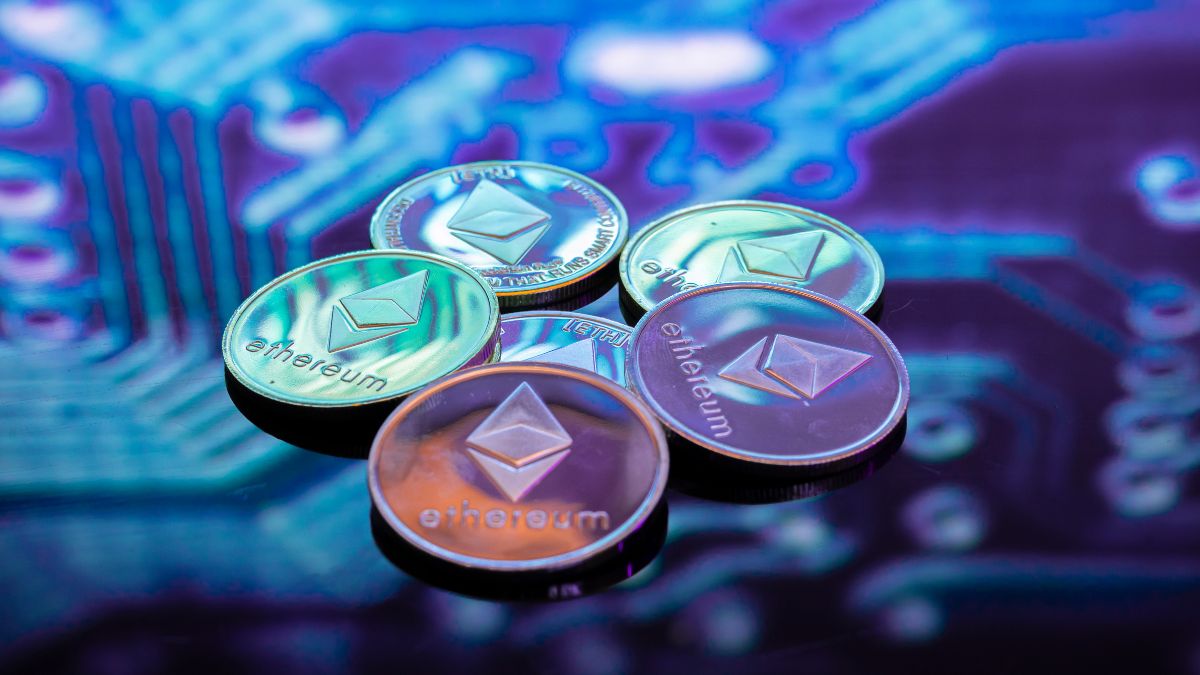Altcoins News
Projects with ongoing migration from Ethereum to Cardano

For various reasons, many dApps and projects are opting for a migration from Ethereum to Cardano.
We will have a look at some of the projects that are considering, or have already made the decision, to start using the blockchain founded by Charles Hoskinson to improve their performance.
Besides mentioning these forward-looking projects, let’s recap the recent milestones that the Cardano blockchain has achieved.
Mary hard fork
March 1st was the date of the implementation of the Mary hard fork, which added the functionality of native tokens to the Cardano blockchain, somewhat reminiscent of the ERC-20 tokens of Ethereum but with key differences, one of which being that the latter require smart contracts in order to be created, whereas Cardano’s native tokens can be issued without them, allowing for a more affordable, secure, lightweight and unified process.
NFTs
The aforementioned upgrade has also created an environment for the first NFTs on Cardano. We’ve covered two of the first projects minting Non-Fungible Tokens on this blockchain: CardanoKidz and SpaceBudz. The NFTs of the latter were issued in the same amount as the 10 thousand CryptoPunks minted on the Ethereum blockchain back in June 2017 and which today are being traded at unbelievable prices: the highest last sale took place on OpenSea a couple of weeks ago with CryptoPunk #3100 being sold for 4,200 ETH ($8,137,921 as of the writing of this article). In contrast, some of the SpaceBudz are also selling at significant figures: SpaceBud #8963 was sold for 35,000 ADA ($41,650 as of the writing of this article).
However, since Cardano doesn’t have smart contracts yet, which are required to create an NFT marketplace like OpenSea, at the moment these SpaceBudz are being traded on the official Discord server of the project, with moderators running an escrow service.
Something worthy of note is that Ethereum-based NFTs have been criticized a lot due to the very high gas fees but more so due to the unbelievable electricity costs of minting and transacting these tokens. This is because Ethereum still uses the energy-intensive Proof of Work consensus mechanism, which is leading many developers and artists to consider different blockchains for their projects and collectables, one of them being Cardano, which uses Proof of Stake.
Decentralization (d=0)
The latest milestone was achieved March 31st with the d parameter reaching 0. This parameter was set to an initial 1 when the Shelley upgrade was implemented back in July 2020, this meant that all blocks of the Cardano blockchain were produced by IOHK’s network of federated nodes.
The gradual reduction of this parameter has allowed the blocks to be produced at an increasing rate by the network of Stake Pool Operators (SPOs) and when the parameter reached 0, the Cardano blockchain has finally took off its training wheels and is now in the hands of the decentralized network of SPOs. Some argue that, technically speaking, the Cardano blockchain is one of the most decentralized networks in the crypto space.
The projects leading the migration from Ethereum to Cardano
The features mentioned above are just the tip of the iceberg of what is persuading many developers to start taking Cardano seriously. However, there is still one big milestone missing: smart contracts. The Goguen era of Cardano will end with phase 3, which will involve another hard fork: Alonzo. During the most recent Cardano360 monthly update, Charles Hoskinson has outlined the timeline for Alonzo.
The testnet will take place between May and June, while the HFC (Hard Fork Combinator) event will take place sometime between July and August, finally adding the smart contract functionality to the mainnet. After this upgrade, projects that are eagerly waiting for smart contracts will be able to launch on Cardano, while those struggling with gas fees on the Ethereum blockchain will have the opportunity to use the ERC-20 Converter to easily migrate to Cardano. Let’s now have a look at two of these projects.
SingularityNET (AGI)
One of the very first projects that has announced its intention to start using the Cardano blockchain is SingularityNET. This decentralized artificial intelligence (AI) solution created by Dr Ben Goertzel has begun its second phase of its migration to Cardano. The project announced its departure from Ethereum back in early October 2020, citing the academic rigor and formal methods behind Cardano as the main reason for migrating to the platform.
During the latest Cardano360 event, Dr Ben Goertzel spoke with Dr Mihaela Ulieru from IOHK and said that the partnership is fantastic and that there’s a great synergy between the teams of SingularityNET and IOHK. He also spoke about phase two of the development of SingularityNET, which involves minting AGI tokens on Cardano. These tokens will be used to incentivize and drive development of advanced AI technology on the Cardano network.
Ben also mentioned the recent NFT drop of an artwork created by the Sophia robot in collaboration with artist Andrea Bonaceto, which has been auctioned on Nifty Gateway and sold for $688,888. At the end of this monthly update, Sophia makes an appearance and announces a conversation with none other than Charles Hoskinson in the next edition of Cardano360.
Celsius Network (CEL)
Celsius is a wealth management platform boasting over $10 billion in community assets that allows borrowing funds and earning interest on crypto deposits.
To be honest, there’s no official announcement from Celsius about the migration from Ethereum to Cardano. But there have been some clues pointing towards it.
One was the conversation between the CEO of Celsius Alex Mashinsky and the founder of Cardano Charles Hoskinson. During this conversation Alex spoke about Celsius requiring a cheaper and more scalable solution as the gas fees on Ethereum are becoming unbearable. Whereas Charles mentioned the ERC-20 Converter and told Alex that they can set up a team to deploy Celsius on a tesnet of Cardano to see how it performs.
The other clue was the presence of Camila Churcher, Head of Business Development at Celsius Network, at the February edition of the Cardano360 show. After presenting Celsius, Camila says that:
“The issues that we’ve experienced with Ethereum on DeFi has been predominantly around fees and it’s really made it less economical for people to participate, and I think Cardano with its Proof of Stake model should be able to help reduce those fees and make it much more efficient for people to be able to participate. So that’s why we want to explore these new opportunities and how Cardano can help”.
She then says that Celsius will soon list the ADA cryptocurrency among the assets available on the platform.
All this seems to be hinting at more future collaborations between the 2 projects.
Final thoughts
These are just two of the projects that are experiencing some hurdles on the Ethereum blockchain and consequently they are looking for better alternatives. I believe many will follow, and to conclude, this is what Charles Hoskinson told Bloomberg in a recent interview:
“My goal is to run countries on this blockchain. I don’t care about Uniswap and CryptoKitties and other things. It’s a bubble, and it comes and it goes, like Pet Rocks and Beanie Babies. More than 100 companies are ‘in the pipeline’, looking to shift from Ethereum to Cardano when its functionality matures. You can take your DeFi and you can run it on my system for 1/100 to 1/1000 of the cost”.
Here’s a recent tweet by IOHK showing the many projects that are present in the Cardano ecosystem:
Altcoins News
Shiba Inu: Celebration for the Burning of 176 Million SHIB in a Historic Transaction

In an exciting development for the Shiba Inu community, September 20 marked a significant milestone as Shiba Inu’s official burn tracker announced that over 176 million SHIB tokens had been burned in a single transaction. But that’s not all; in the last 24 hours, a total of 135,933,606 SHIB tokens were burned, adding up to an impressive total of 521,814,163 tokens burned in just 7 days.
Impact on SHIB Price
As expected, this exceptional event has captured the attention of the cryptocurrency community and Shiba Inu investors worldwide. In the latest hourly update provided by Shibburn, the current price of the meme coin stands at $0.0000073, with a slight 0.15% decrease in the last hour. Although there has been a 1.34% decrease in the price in the last 24 hours, Shiba Inu’s market capitalization remains strong, valued at $4,297,527,749.
Lucie: The Voice of the Shiba Inu Community
On September 18, a key member of the Shiba Inu team, known as Lucie, addressed the community to answer burning questions about the highly anticipated SHIB token burn in Shibarium. Lucie emphasized that token burns are scheduled per transaction, meaning they occur based on the level of community participation. In a passionate plea, she urged SHIB holders to support this effort, stressing that SHIB burns are the result of close collaboration between developers and the community.
Lucie also pointed out that while it’s exciting to see enthusiasm for token burns, it’s crucial for the community to understand that SHIB burns are a community-driven initiative and not a call for developers to take immediate action.
Shibarium’s Focus: Strengthening BONE ShibaSwap
Amidst this backdrop of token burns, the Shibarium team has shifted its focus to strengthen the Bone ShibaSwap token, also known as BONE. Lucie emphasized that the implementation of BONE aims primarily to safeguard the interests of investors. To achieve this goal, the team has implemented a temporary locking contract along with a decentralized multi-signature wallet, ensuring maximum protection for Shiba Inu investors.
Shibarium’s Success with NOWNodes
Recently, Shibarium achieved an impressive feat by processing over 7 million RPC requests for the network in just one week. This achievement sets a new record for the platform and underscores the growing importance of Shibarium in the cryptocurrency ecosystem. NOWNodes, a node service provider supporting more than 80 blockchain networks, reported on this noteworthy accomplishment, highlighting Shibarium’s increasing relevance in the world of cryptocurrencies.
The Shiba Inu community is excited about these recent developments and the massive SHIB token burn, further bolstering their confidence in the project. With Shibarium gaining momentum and active community engagement, the future of Shiba Inu appears bright in the world of cryptocurrencies.
Altcoins News
Crypto Enforcement Funds Under Scrutiny: Congressman Emmer Calls For Restrictions On SEC

In a recent statement, Congressman Tom Emmer, a prominent figure in the GOP and a staunch advocate for crypto, expressed his concerns regarding the actions of Securities and Exchange Commission (SEC) Chair Gary Gensler.
Emmer accused Gensler of abusing his authority, leading to the expansion of the Administrative State while “disregarding the interests of the American people”.
To address these concerns, Emmer plans to sponsor an appropriations amendment aimed at restricting the SEC’s use of funds for crypto enforcement until clear rules and regulations are established.
Emmer Advocates For Clear Rules In The Crypto Industry
Emmer’s criticism of Chair Gensler centers on what he perceives as the weaponization of taxpayer dollars. Emmer argues that Gensler has utilized his position to further centralize regulatory control without ensuring a transparent and regulatory-friendly environment for the crypto industry.
By proposing to restrict the SEC’s funds for digital asset enforcement, Emmer seeks to emphasize the need for clear guidelines that protect both investors and innovators in the crypto space.
Addressing Senator Elizabeth Warren’s stance on cryptocurrencies, Emmer refers to her as a “control-freak senator” with an inclination towards centralized control.
He suggests that Warren favors a government-owned banking system and desires to retain the centralized power that comes with central banking. Emmer acknowledges the importance of central banking’s role but emphasizes the need for its evolution to adapt to the 21st century.
Emmer further asserts that attempts to suppress digital assets and cryptocurrencies are futile. He cites China’s unsuccessful ban on mining activities as evidence that even authoritarian regimes struggle to control decentralized technologies.
Emmer believes that a country like the United States, which “cherishes freedom”, cannot impede the progress of digital assets and cryptocurrencies.
The congressman’s remarks shed light on his perspective as an advocate for the crypto industry and his concerns regarding regulatory overreach. Emmer emphasizes the necessity of clear and balanced regulations that foster innovation while protecting investors.
By sponsoring an appropriations amendment, he aims to use the legislative process to ensure that the SEC’s enforcement actions align with well-defined rules and regulations.
As Emmer’s proposed amendment gains attention, it reflects the ongoing debate surrounding crypto regulations in the United States. The crypto industry seeks regulatory clarity to foster growth and innovation, while regulatory bodies like the SEC aim to protect investors and maintain market integrity.
Finding the right balance between oversight and innovation remains a key challenge, and Emmer’s efforts contribute to shaping the future of crypto regulation in the United States.
It remains to be seen how Emmer’s appropriations amendment will progress through the legislative process and how it will be received by his colleagues.
As the nascent industry continues to evolve, the role of Congress and regulatory agencies in establishing a clear and balanced regulatory framework will be crucial for its long-term success and widespread adoption.
Featured image from iStock, chart from TradingView.com
Altcoins News
US Forces Young Hacker To Forfeit $5.2 Million In Bitcoin

Last month, Ahmad Wagaafe Hared, a young hacker based in the United States, was ordered to forfeit approximately $5.2 million worth of Bitcoin (BTC), Stellar (XLM), and a BMW sports car to the government. According to a report, this order was made last week due to Hared’s involvement in a SIM-swapping scheme that targeted crypto executives in North California and the Bay Area.
The Bitcoin SIM-Swapping Hack
The SIM-swapping scheme, orchestrated by Hared–who went by the alias “winblo” — began in 2016 and was stopped by local authorities in 2019.
Hared and his accomplices obtained their victims’ contact information before entering a plea agreement with law enforcement agencies. They would then contact cellphone service providers, manipulating company representatives into believing they were the legitimate owners of the targeted phone numbers.
After that, they swapped cards, illegally taking control of their victims’ phone numbers. With this scheme, the hacker gained unauthorized access to their victims’ email and other crypto accounts before transferring coins.
The success of this scheme is evident in the significant amount of assets ordered for forfeiture. Hared must surrender 119.8 BTC, valued at $5.2 million, and 93,420 XLM, worth $11,770. A 2017 BMW sports car, believed to be proceeds of crime, must also be surrendered to the state.
The young hacker has been under arrest for over three years now. As mentioned, in 2019, Hared entered a plea agreement, though many case documents remain sealed, and the deal has not been disclosed to the public. Hared will be sentenced in January 2024 after pleading guilty to conspiracy to commit wire fraud.
According to details, this case is tied to another SIM-swapping scheme, which saw the indictment of Anthony Francis Faulk, also known as “shade,” who pleaded guilty to conspiracy to commit wire fraud in 2019.
Hackers Have Stolen Over $200 Million In 2023 Alone
In a recent report, blockchain intelligence firm Chainalysis claimed that hackers linked to North Korea have stolen over $200 million worth of cryptocurrencies to finance their nuclear weapons program.
In August, Lazarus Group said to be sponsored by the North Korean regime, was linked to the $34 million CoinsPaid hack. They were also reportedly behind the Stake.com hack, the FBI claims. The hit on the crypto casino saw over $40 million of coins robbed.
As part of their activities, hackers employ several tactics to steal Bitcoin and coins, including SIM-swapping, phishing, supply chain attacks, and infrastructure hacks.
Feature image from Canva, chart from TradingView
-
Opinion2 years ago
XRP: FOX Business Senior Correspondent Says SEC Is Losing Its Lawsuit Against Ripple
-
Tutorials3 years ago
How to Earn, Farm and Stake CAKE on PancakeSwap with Trust Wallet
-
NFT3 years ago
CardanoKidz: The first NFTs arrive at Cardano
-
Tutorials3 years ago
How to set up a Bitcoin node: beginner’s guide
-
NFT3 years ago
SpaceBudz: new astronaut NFTs on Cardano
-
DeFi News3 years ago
Uniswap vs PancakeSwap: Full analysis
-
DeFi News3 years ago
Liqwid Finance the first DeFi project on Cardano: everything you need to know
-
DeFi News3 years ago
PancakeSwap has surpassed Ethereum in transaction volume




















